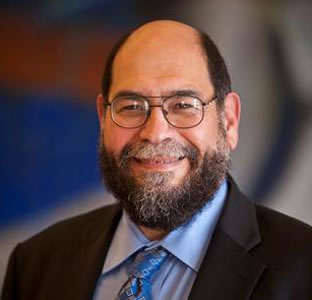UTSA demographer explores demographic trends of U.S. Latino children

Rogelio Saenz

Rogelio Saenz
(Feb. 6, 2014) -- A new research report by Rogelio Saenz, UTSA dean of the College of Public Policy and Peter Flawn Professor of Demography, contends that the single largest component of the U.S. child population will be Latino by 2060.
The report, "The State of Latino Children," explores the demographic trends of Latino children in the United States, including educational challenges, mortality rates and projected population growth from 2000 through 2060.
According to Saenz's research, while the child populations of whites, blacks, American Indians and Alaska Natives declined significantly between 2000 and 2011, the nation's overall child population increased by 1.7 million, largely due to growth in the Latino child population.
If this growth continues, he expects, based on population projections from the U.S. Census Bureau, Latinos to make up nearly 40 percent of the country's child population by 2060. This suggests that they will replace whites as the largest group of children sometime between 2050 and 2060.
According to Saenz, this demographic trend brings with it a set of socioeconomic matters for Latino children that must be addressed, including matters of educational attainment, poverty and health insurance. The report states that more than one-third of Latino children today live in poverty, and their educational level lags behind other demographic populations.
"It is already clear that Latinos are becoming an increasingly significant part of the American educational system, workforce, consumer base and voting population," said Saenz.
He added, "The future of the United States will increasingly be tied to the socioeconomic fortunes of Latino youth. It is essential that policymakers recognize the need to invest in the educational preparation of Latino children in order to ensure that they reach their full potential. The U.S. needs to view Latino children as an asset rather than a liability, as our children and as our future. An investment in the education of Latino children will yield major returns in the form of an educated, competitive work force and engaged citizenry."
"The State of Latino Children" was prepared for the Council on Contemporary Families as part of its three-part 2014 Civil Rights Online Symposium on Changing Ethnic Realities Since the Civil Rights Act.
>> Read a full overview of the report.
Events
This event will acknowledge graduating seniors from the McNair Scholars program at UTSA before inducting the new cohort of scholars into the program.
North Paseo Building (NPB 5.140), Main CampusAt this memorable celebration, UTSA graduates will be introduced one-by-one to cross the stage and accept their doctoral degrees.
Arts Building Recital Hall, Main CampusRoadrunner Walk is an event for graduating students to have a memorable walk on campus to celebrate an important milestone and their achievements. Graduates will walk along the Paseo while being celebrated by the UTSA community, friends, and family members.
Student Union Paseo, Main CampusCelebrate the accomplishments of College of Education and Human Development, College for Health, Community and Policy, College of Sciences and University College.
Alamodome, 100 Montana St.Celebrate the accomplishments of Alvarez College of Business, College of Liberal and Fine Arts and Klesse College of Engineering and Integrated Design.
Alamodome, 100 Montana St.

